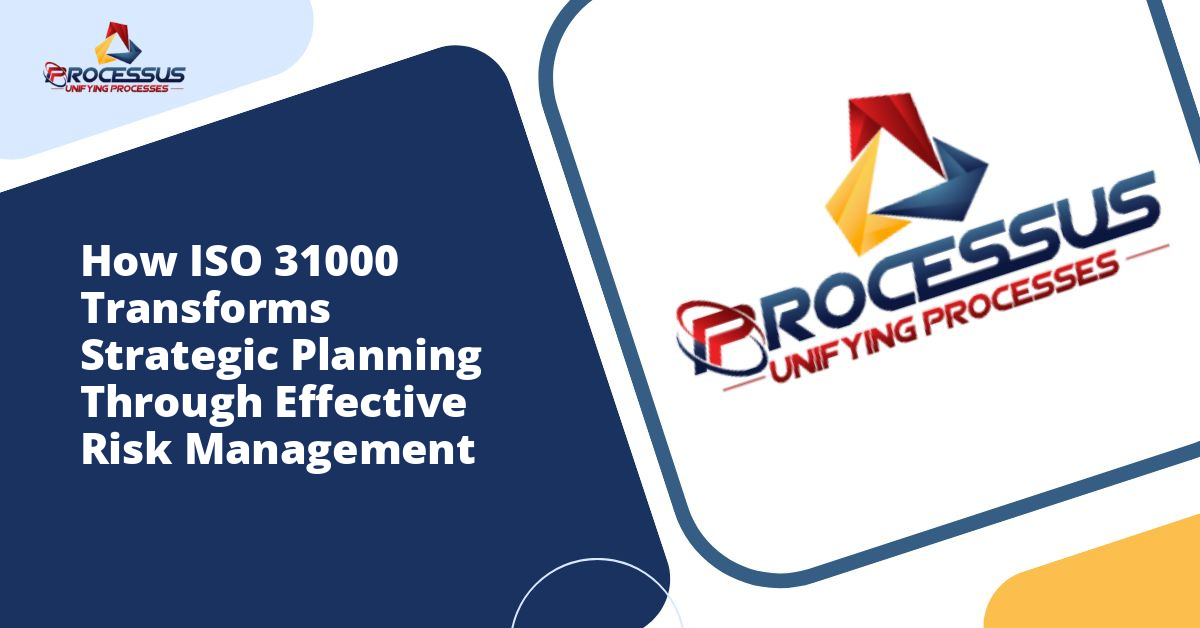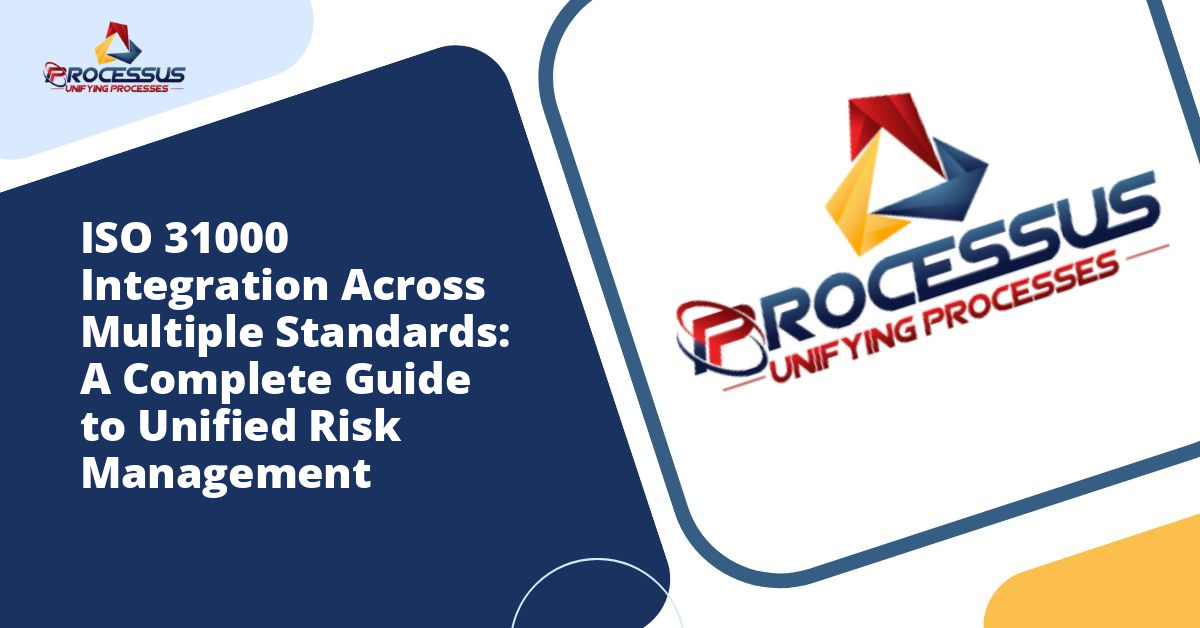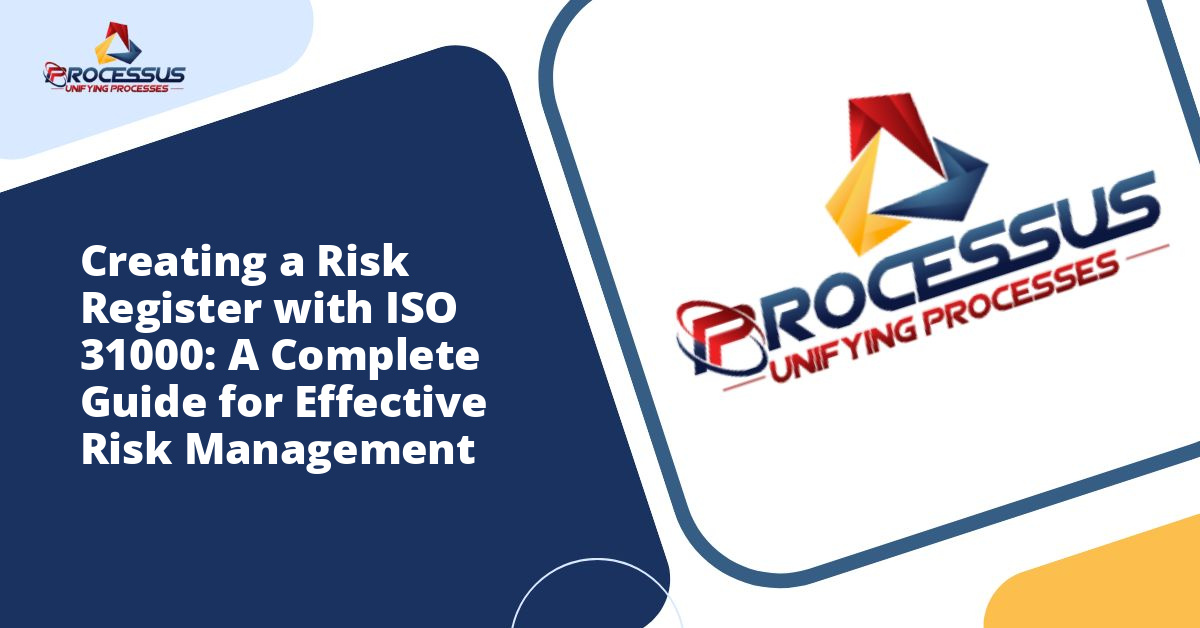In today’s complex business environment, organizations face an ever-growing array of risks that can impact their operations, reputation, and bottom line. Understanding and implementing effective risk assessment techniques has become essential for survival and success. The ISO 31000 standard provides a comprehensive framework that helps organizations of all sizes and sectors identify, analyze, and manage risks systematically. This guide explores the key techniques and methodologies that make ISO 31000 the globally recognized benchmark for risk management excellence.
Understanding the ISO 31000 Framework
ISO 31000 represents an international standard for risk management that was first published in 2009 and revised in 2018. Unlike many other ISO standards, it does not require certification, making it accessible and adaptable for any organization regardless of industry, size, or location. The framework provides principles, a structured approach, and a process for managing risk that can be customized to fit specific organizational contexts and requirements. You might also enjoy reading about ISO 31000 vs ISO 27005: A Complete Guide to Choosing the Right Risk Management Framework.
The standard emphasizes that effective risk management requires a systematic, structured, and timely approach. It recognizes that risk management should be an integral part of all organizational activities, from strategic planning to day-to-day operations. By following ISO 31000 guidelines, organizations can increase the likelihood of achieving their objectives, improve the identification of opportunities and threats, and establish a reliable basis for decision-making and planning. You might also enjoy reading about ISO 31000 Risk Management Framework Implementation: A Complete Guide for Organizations.
Core Principles of Risk Assessment Under ISO 31000
Before delving into specific techniques, it is important to understand the eight core principles that underpin the ISO 31000 approach to risk management. These principles serve as the foundation for all risk assessment activities and ensure that the process remains effective and relevant. You might also enjoy reading about Understanding Risk Appetite and Tolerance: A Complete Guide Using ISO 31000 Framework.
Integration Into Organizational Processes
Risk management should not exist as a standalone activity but rather should be embedded into all aspects of organizational management. This integration ensures that risk considerations inform every decision and activity throughout the organization. When risk assessment becomes part of the organizational culture, employees at all levels begin to think proactively about potential challenges and opportunities.
Structured and Comprehensive Approach
A structured approach to risk assessment contributes to consistent, comparable, and reliable results. ISO 31000 advocates for a systematic process that can be replicated across different departments, projects, and timeframes. This consistency enables organizations to track trends, compare risks across different areas, and allocate resources more effectively.
Customization and Context Awareness
Every organization operates within a unique context shaped by its objectives, stakeholders, culture, and external environment. ISO 31000 recognizes this diversity and encourages organizations to adapt risk assessment techniques to their specific circumstances. What works for a multinational corporation may not suit a small nonprofit organization, and the framework accommodates these differences.
The Risk Assessment Process in ISO 31000
The ISO 31000 standard outlines a clear process for conducting risk assessments that consists of several interconnected stages. Each stage builds upon the previous one, creating a comprehensive understanding of the risk landscape and informing appropriate responses.
Establishing the Context
The first step in any risk assessment involves establishing the context in which risks will be evaluated. This stage requires organizations to define the scope of the risk assessment, understand the internal and external environment, and establish risk criteria that will guide decision-making throughout the process.
Establishing context means identifying stakeholders who may be affected by risks or who can influence risk outcomes. It also involves understanding regulatory requirements, competitive pressures, technological changes, and social trends that could impact the organization. Internal factors such as organizational culture, capabilities, resources, and governance structures must also be considered.
Risk criteria are the benchmarks against which the significance of risks will be evaluated. These criteria should reflect organizational values, objectives, and resources. They might include financial thresholds, safety standards, reputational considerations, or compliance requirements. Clear risk criteria ensure that risk evaluation remains objective and consistent across the organization.
Risk Identification
Once the context has been established, organizations can begin identifying potential risks. This stage aims to create a comprehensive list of events, situations, or circumstances that could affect the achievement of objectives. The goal is to be as thorough as possible, recognizing that unidentified risks cannot be managed.
ISO 31000 supports the use of various risk identification techniques, each offering different advantages depending on the situation. Brainstorming sessions bring together diverse perspectives and can generate creative insights into potential risks. Structured interviews with key personnel provide in-depth understanding of specific areas. Checklist analysis ensures that common risks are not overlooked, while scenario analysis helps identify risks associated with different possible futures.
Historical data analysis examines past incidents, near-misses, and trends to identify patterns that might indicate future risks. Process flow analysis maps out organizational activities to identify points of vulnerability. External research considers industry reports, expert analyses, and case studies from similar organizations. The combination of multiple identification techniques typically yields the most comprehensive results.
Quantitative Risk Assessment Techniques
Quantitative techniques use numerical data and mathematical models to analyze risks. These approaches provide objective measurements that can be particularly useful when communicating with stakeholders who prefer data-driven insights or when comparing different risks on a common scale.
Probability and Impact Analysis
This fundamental technique assigns numerical values to both the likelihood of a risk occurring and the magnitude of its potential impact. Probability might be expressed as a percentage or frequency, while impact is typically measured in financial terms, though other metrics such as time delays or safety incidents can also be used.
Organizations often create risk matrices that plot probability against impact, with each combination resulting in a risk rating. High probability and high impact risks demand immediate attention, while low probability and low impact risks may require only monitoring. This visual representation helps prioritize risk management efforts and facilitates discussions about resource allocation.
Monte Carlo Simulation
For complex situations involving multiple variables and uncertainties, Monte Carlo simulation offers a sophisticated analytical approach. This technique runs thousands or millions of scenarios, varying input parameters according to their probability distributions, to generate a range of possible outcomes. The results show not just a single predicted outcome but rather a distribution of possibilities with associated probabilities.
Monte Carlo simulation is particularly valuable for financial risk assessment, project schedule analysis, and operational planning. It helps organizations understand the full range of potential outcomes and make more informed decisions about risk tolerance and mitigation strategies.
Cost-Benefit Analysis
When evaluating potential risk treatments, cost-benefit analysis provides a structured way to compare the costs of implementing controls against the expected reduction in risk exposure. This technique helps ensure that risk management efforts generate value and that resources are allocated efficiently.
A thorough cost-benefit analysis considers both direct and indirect costs, immediate and long-term benefits, and tangible and intangible factors. It recognizes that some benefits, such as improved reputation or employee morale, may be difficult to quantify but remain important considerations in risk management decisions.
Qualitative Risk Assessment Techniques
Qualitative techniques rely on subjective judgment, experience, and descriptive scales rather than numerical calculations. These approaches can be faster and more flexible than quantitative methods, and they work well when data is limited or when risks involve significant uncertainty or complexity.
Risk Ranking and Scoring
This technique uses descriptive scales to evaluate probability and impact, such as low, medium, and high, or more detailed scales with five or seven levels. Subject matter experts assess each identified risk against these scales based on their knowledge, experience, and judgment. The resulting scores help prioritize risks for further analysis or treatment.
Risk ranking works particularly well in workshop settings where diverse stakeholders can discuss and debate the appropriate rating for each risk. The dialogue often proves as valuable as the final scores, as it surfaces different perspectives and builds shared understanding across the organization.
Bowtie Analysis
Bowtie analysis provides a visual representation of risk that shows the relationship between a potential event, its causes, and its consequences. The technique gets its name from the diagram shape, which resembles a bowtie. On the left side are the threats or causes that could trigger the risk event, shown in the center. On the right side are the potential consequences if the event occurs.
The power of bowtie analysis lies in its ability to map both preventive controls that reduce the likelihood of the risk event and mitigating controls that minimize consequences if the event occurs. This comprehensive view helps organizations ensure they have adequate controls at all critical points and identifies gaps where additional measures may be needed.
SWIFT Analysis
Structured What-If Technique, or SWIFT, is a facilitated workshop approach that systematically examines potential deviations from expected operations. A skilled facilitator guides participants through a series of “what if” questions related to specific activities, processes, or systems. The structured nature ensures comprehensive coverage while the workshop format leverages collective knowledge and experience.
SWIFT analysis is particularly effective for operational risk assessment and works well in industries where process safety is critical. The technique helps organizations think beyond obvious risks and consider unusual but plausible scenarios that might otherwise be overlooked.
Semi-Quantitative Assessment Approaches
Semi-quantitative techniques bridge the gap between purely qualitative and quantitative approaches. They use numerical scales or rankings but recognize that the numbers represent subjective judgments rather than precise measurements. These hybrid methods combine the accessibility of qualitative techniques with some of the analytical rigor of quantitative approaches.
Risk Matrix with Numerical Scales
Instead of using descriptive terms like low and high, a semi-quantitative risk matrix assigns numbers to different levels of probability and impact. For example, probability might be scored from 1 to 5, and impact from 1 to 5, with the risk rating calculated by multiplying these scores. This approach provides more granular differentiation between risks while remaining relatively simple to apply.
Organizations must be careful to define what each numerical level represents to ensure consistency in application. Clear definitions help different assessors arrive at similar conclusions when evaluating comparable risks, improving the reliability of the overall assessment.
Fault Tree Analysis
Fault tree analysis works backward from an undesired event to identify all the possible combinations of failures that could cause it. The technique uses logic gates to show how different factors combine, creating a tree diagram that illustrates the pathways to failure. Probabilities can be assigned to individual component failures, allowing calculation of the overall probability of the top event.
This technique is particularly valuable for analyzing complex systems where multiple failures must occur simultaneously for a serious incident to result. It helps organizations understand system vulnerabilities and prioritize reliability improvements where they will have the greatest impact.
Implementing Risk Assessment Techniques Effectively
Selecting and applying appropriate risk assessment techniques requires careful consideration of several factors. The choice of technique should align with the nature of the risks being assessed, the availability of data and resources, the timeline for the assessment, and the needs of decision-makers who will use the results.
Matching Techniques to Situations
Strategic risks that could affect the entire organization often benefit from techniques that provide broad perspective and facilitate executive discussion, such as scenario analysis or SWIFT workshops. Operational risks may be better suited to detailed process-focused techniques like bowtie analysis or fault tree analysis. Financial risks often demand quantitative approaches that provide numerical estimates of potential losses.
The maturity of the organization’s risk management program also influences technique selection. Organizations new to formal risk assessment might start with simpler qualitative approaches before progressing to more sophisticated quantitative methods as their capabilities develop.
Ensuring Quality and Consistency
The reliability of risk assessment results depends heavily on the quality of input and the consistency of application. Organizations should invest in training to ensure that people conducting assessments understand the chosen techniques and apply them correctly. Clear documentation of methodology, assumptions, and limitations helps others interpret and use assessment results appropriately.
Regular review and validation of risk assessments maintain their relevance as circumstances change. Risks evolve over time, new risks emerge, and previously significant risks may diminish in importance. Periodic reassessment ensures that risk management efforts remain focused on current priorities.
Integrating Multiple Techniques
No single technique can address all aspects of risk assessment. Leading organizations typically employ multiple complementary techniques to gain different perspectives on their risk landscape. A comprehensive enterprise risk assessment might begin with broad risk identification workshops, followed by detailed analysis of priority risks using specific techniques matched to each risk’s characteristics.
Combining techniques also provides validation. When different approaches point to similar conclusions, confidence in the results increases. Conversely, when techniques yield conflicting results, this signals the need for further investigation to understand why perspectives differ.
Common Challenges and Solutions
Organizations implementing ISO 31000 risk assessment techniques often encounter obstacles that can undermine effectiveness. Awareness of common challenges and proactive strategies to address them improves the likelihood of success.
Overcoming Resistance to Risk Management
Some employees view risk management as bureaucratic overhead that distracts from “real work.” This attitude can lead to superficial compliance with risk assessment processes without genuine engagement. Addressing this challenge requires clear communication about the value that risk management provides, demonstrating how it supports rather than hinders achievement of objectives.
Engaging employees in risk assessment as active participants rather than passive subjects helps build buy-in. When people see that their insights are valued and that risk management leads to tangible improvements in their work environment, resistance typically diminishes.
Managing Cognitive Biases
Human judgment, which plays a central role in most risk assessment techniques, is subject to various cognitive biases that can distort results. Optimism bias leads people to underestimate the probability of negative events affecting them. Availability bias causes recent or memorable events to be weighted too heavily. Anchoring bias occurs when initial estimates unduly influence subsequent judgments.
Awareness of these biases represents the first step toward mitigation. Structured techniques that force systematic consideration of evidence, diverse perspectives in assessment teams, and independent review of assessment results all help counteract bias. Organizations should also foster a culture where challenging assumptions and questioning conclusions is encouraged rather than punished.
Balancing Detail and Practicality
There is a natural tension between comprehensive risk assessment and practical resource constraints. Attempting to analyze every conceivable risk in exhaustive detail quickly becomes overwhelming and unsustainable. Organizations must find the right balance for their circumstances, focusing detailed analysis on the most significant risks while applying lighter-touch approaches to less critical areas.
Proportionality should guide the depth of assessment. Risks with potentially catastrophic consequences warrant more rigorous analysis than those with minor impacts. Similarly, high-uncertainty risks may justify additional investigation compared to well-understood risks. Clear criteria for determining the appropriate level of analysis helps ensure consistency and efficient resource use.
The Future of Risk Assessment
Risk assessment continues to evolve as new tools, technologies, and methodologies emerge. Organizations committed to excellence in risk management should monitor developments that could enhance their capabilities.
Artificial intelligence and machine learning are beginning to augment traditional risk assessment techniques, particularly for analyzing large datasets to identify patterns and predict emerging risks. These technologies can process far more information than human analysts, potentially uncovering risks that might otherwise go unnoticed. However, human judgment remains essential for interpreting results, considering context, and making final decisions.
Real-time risk monitoring is becoming more feasible as organizations digitize operations and deploy sensors throughout their physical and digital infrastructure. Rather than relying solely on periodic assessments, organizations can track risk indicators continuously and receive alerts when conditions change. This capability enables more agile risk management that responds quickly to evolving circumstances.
Integration of risk management with other organizational systems represents another important trend. As organizations recognize that risk considerations should inform all decisions, they are embedding risk assessment tools into project management systems, strategic planning processes, and operational dashboards. This integration makes risk information readily available when and where decisions are made.
Conclusion
ISO 31000 provides a robust framework for risk assessment that can be adapted to virtually any organizational context. The standard’s emphasis on principles rather than prescriptive procedures allows flexibility while maintaining rigor. By selecting appropriate techniques from the diverse toolkit available, organizations can develop deep understanding of their risk landscape and make informed decisions about how to manage those risks.
Effective risk assessment requires more than just applying techniques mechanically. It demands thoughtful consideration of context, engagement of relevant stakeholders, honest acknowledgment of uncertainties, and willingness to act on findings. Organizations that embrace these principles and invest in developing their risk assessment capabilities position themselves to navigate challenges successfully and seize opportunities that others might miss.
The journey toward risk management excellence is ongoing rather than a destination to be reached. As organizations grow and evolve, as their operating environment changes, and as new risks emerge, assessment approaches must adapt accordingly. Regular review and continuous improvement ensure that risk assessment remains a valuable tool that genuinely supports organizational success rather than becoming a stale compliance exercise.
By committing to the principles and practices outlined in ISO 31000, organizations demonstrate maturity and responsibility in their approach to uncertainty. They signal to stakeholders that leadership takes seriously its obligation to protect and create







